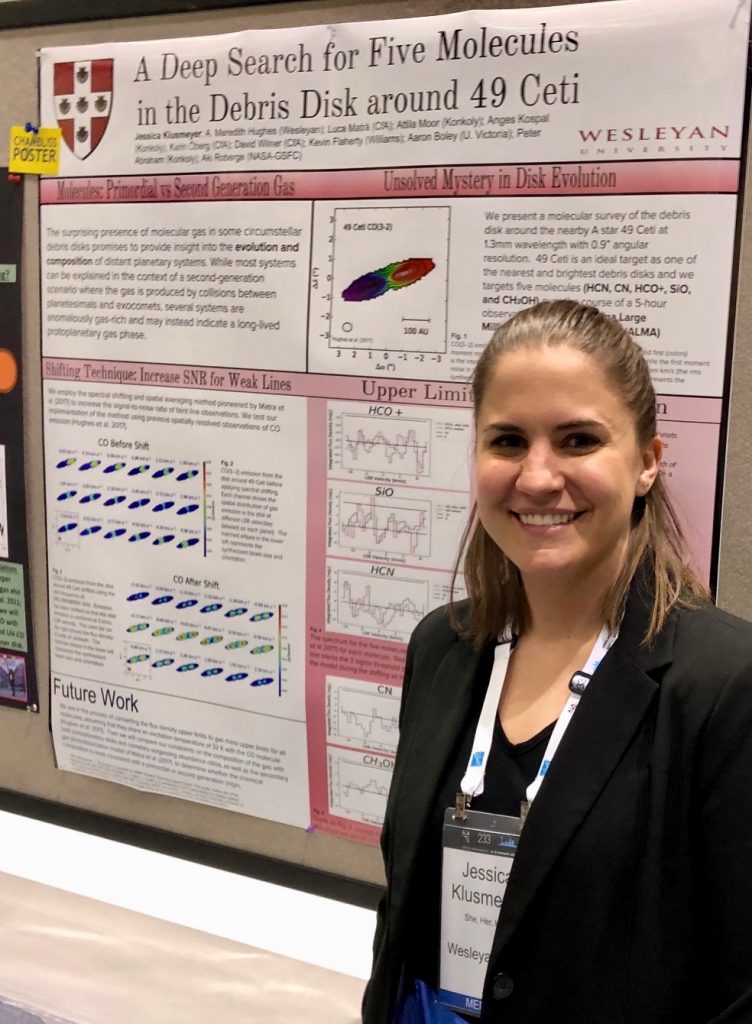Klusmeyer Receives a Chambliss Award for Astronomy Research

 After a star forms, a dusty ring of space debris may begin orbiting around a star. These circumstellar disks are composed of asteroids or collision fragments, cosmic dust grains, and gasses.
After a star forms, a dusty ring of space debris may begin orbiting around a star. These circumstellar disks are composed of asteroids or collision fragments, cosmic dust grains, and gasses.
Astronomy graduate student Jessica Klusmeyer is interested in understanding the molecular composition of the debris disk gas. “It has important implications not only for our knowledge of debris disks but also for planet formation,” she said.
Klusmeyer joined more than 25 Wesleyan affiliates and shared her research during the 233rd American Astronomical Society Meeting Jan. 6-10 in Seattle, Wash. The American Astronomical Society (AAS) awarded Klusmeyer a Chambliss medal for her poster presentation titled, “A Deep Search for Five Molecules in the Debris Disk around 49 Ceti.”
The Astronomy Achievement Student Awards recognize exemplary research by undergraduate and graduate students who present at one of the poster sessions at the meetings of the AAS. Awardees are honored with a Chambliss medal or a certificate.
Klusmeyer competed for the Chambliss award against hundreds of graduate and PhD students from research universities around the country.
A second-year masters student, Klusmeyer is working on the project with her advisor, Meredith Hughes, assistant professor of astronomy and assistant professor, integrative sciences.
“Professor Hughes has a very active and supportive research group that covers a wide variety of circumstellar disks and planet formation topics,” Klusmeyer said. “She works in radio wavelengths of light and the group often utilizes data from the world-class Atacama Large Millimeter/submillimeter Array (ALMA) telescope.”
Klusmeyer joined Hughes’s group during her first year of graduate school and is working on unlocking the molecular composition of a nearby debris disk surrounding 49 Ceti, a star located in the constellation of Cetus. Cetus, which is named after a Greek sea monster, resembles the shape of a whale and can be viewed from campus (or as far away as Chile!).
Scientists once thought that debris disks would lose their gas composition after planet formation, however, more than 20 debris disks containing molecular carbon monoxide gas have already been detected by astronomers.
“Our project wants to understand the nature of this gas,” Klusmeyer explained. “Is it leftover material from when the star formed, or is it constantly being produced in collisions from exocomets or other small bodies orbiting around 49 Ceti?”
If a debris disk has gas, “it may provide a longer period of time for gas giant planet formation or we could detect other molecules commonly found in comets and have the first glance at the molecular composition of comets around other stars,” she said.
Girish Duvvuri ’17 received a Chambliss medal in 2018. Read more.

